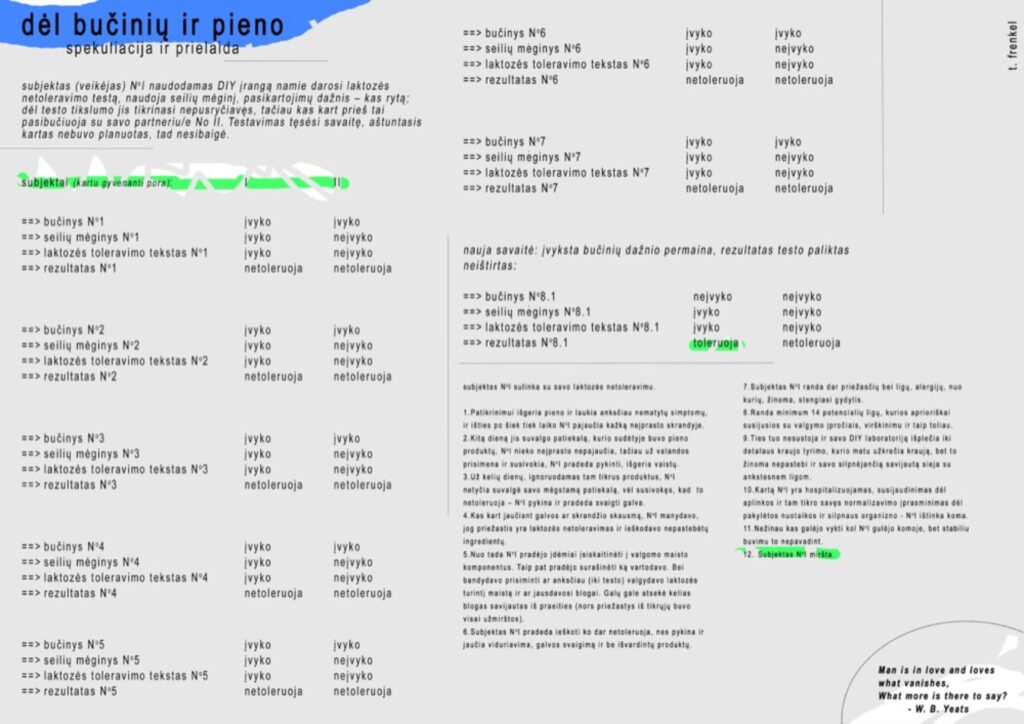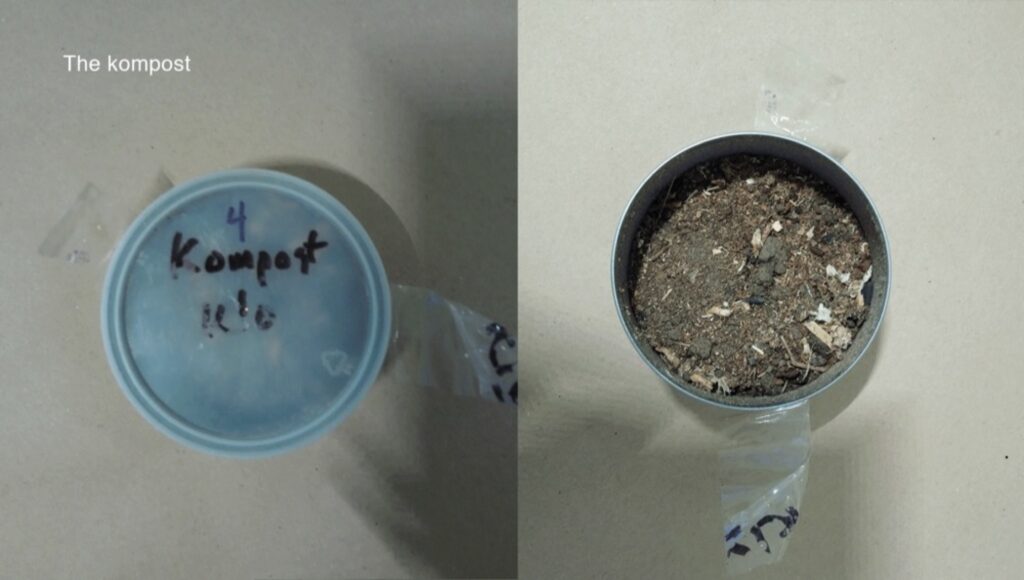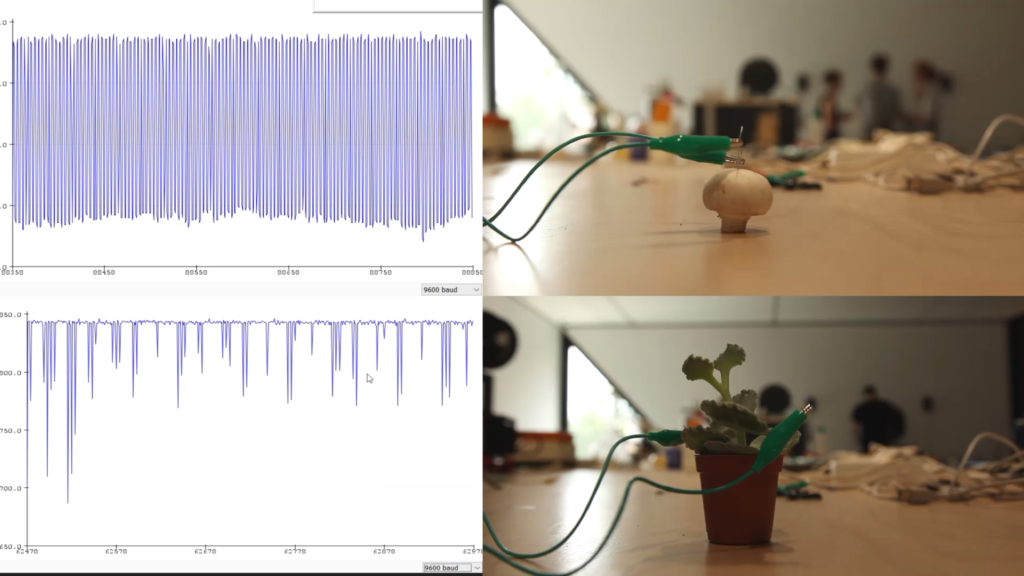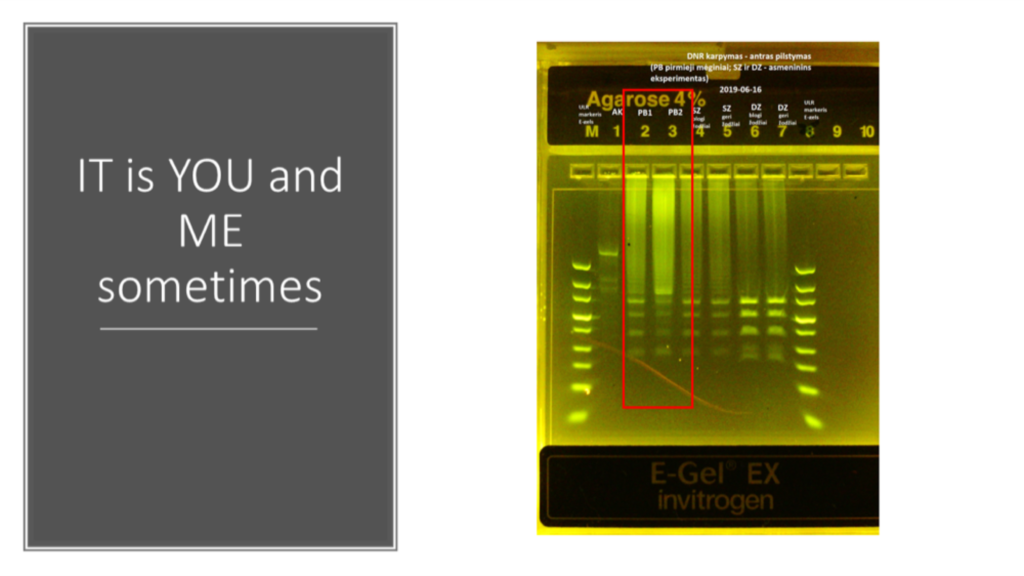Installation, workshops, 2017-2019
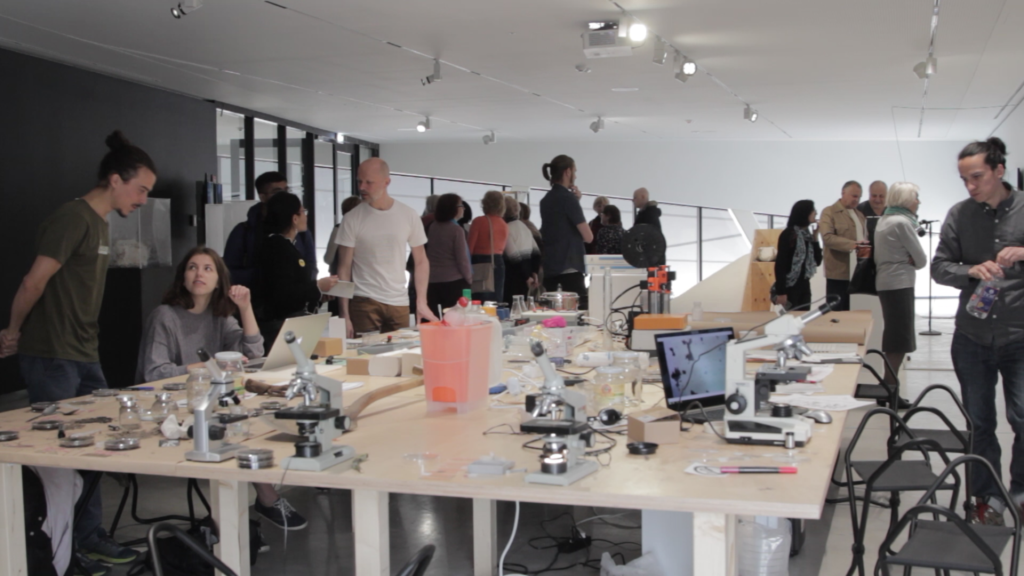
The installation resembles a DIY biological experiment laboratory, where artworks, lab equipment, people, and events are brought together in order to understand and to reflect on self-organization of the ecosystem, human-machine interaction, and contemporary discourses. What could one do with the knowledge gained in collaboration with artists, scientists, and engineers? How could one “produce” new meanings in a collaborative setting? Self-Repair Lab is also about acquiring knowledge and seeking answers while making things. Having no access to a science laboratory or scientists, but having access to kitchen tools and the Internet, one could aspire to knowledge, which could help in solving tasks, especially those related to one’s health and the ecosystem. How would that work, and what would be the role of the artist in such a framework?
Referring to the idea of Self-Repair, Gapševičius suggests the importance of understanding how humans are influenced by the environment and how they influence the environment. There are also other questions that arise, such as: How far can one experiment with one’s own body? Or, to whom do parts of one’s body belong if they are detached from said body? To put it simply, “self-repair” relates strongly to the adaptability required to live in a changing environment: when humans talk about evolution, they say that life has survived due to its ability to adapt to changing conditions (for example, Lynn Margulis’s theory of evolution). While the aim of “self-repair” is to adapt to present conditions, there is a need to reflect on developing technologies, scientific discoveries, and the changing understanding of humans as beings.
Related media
